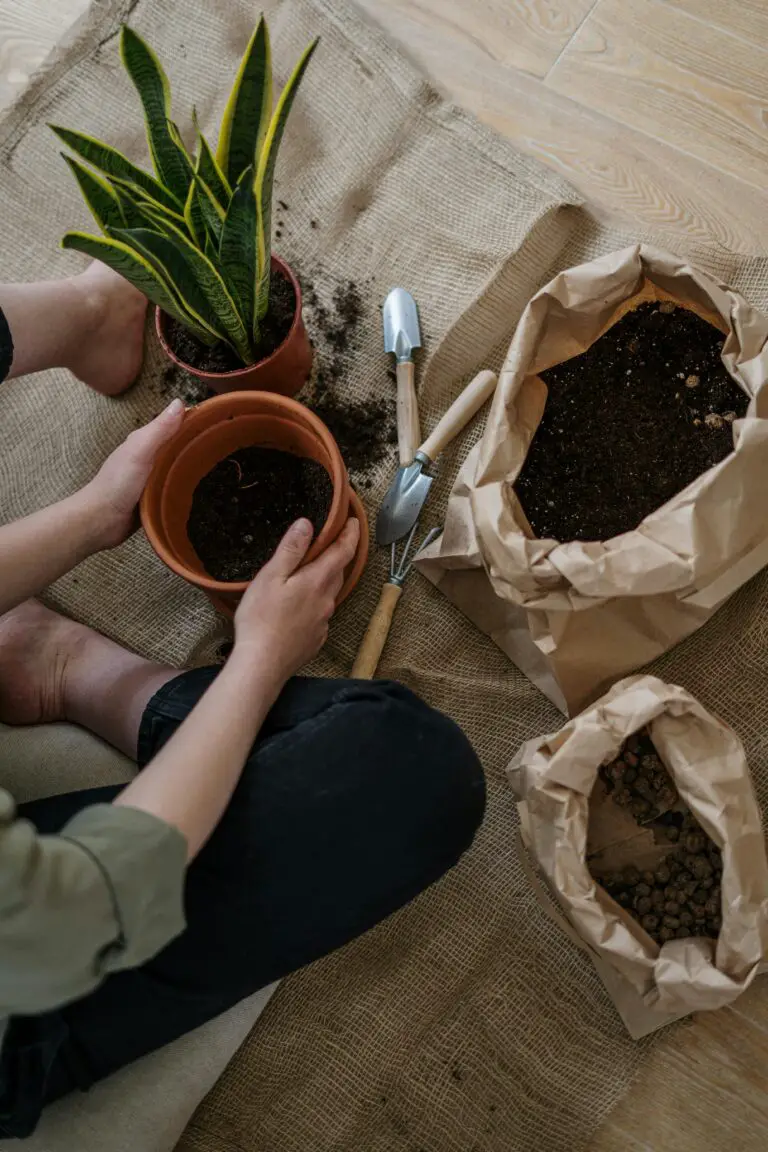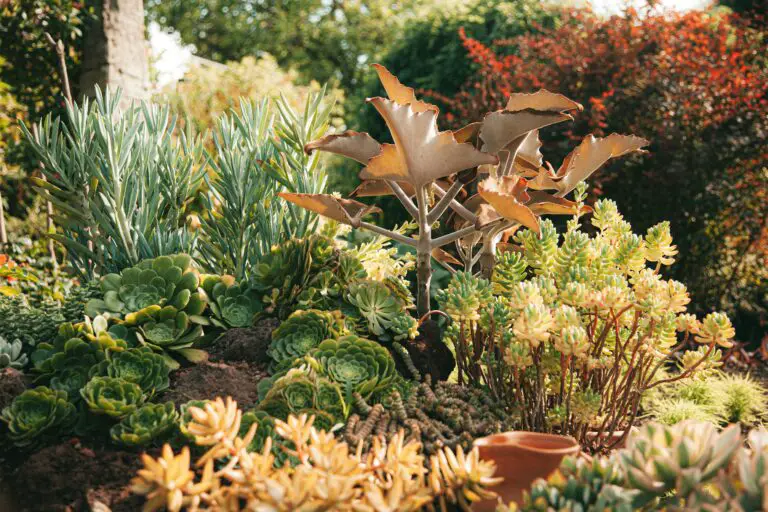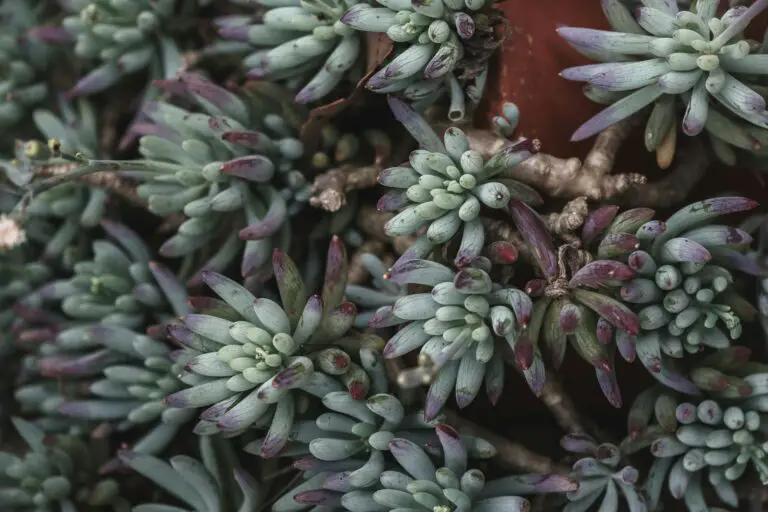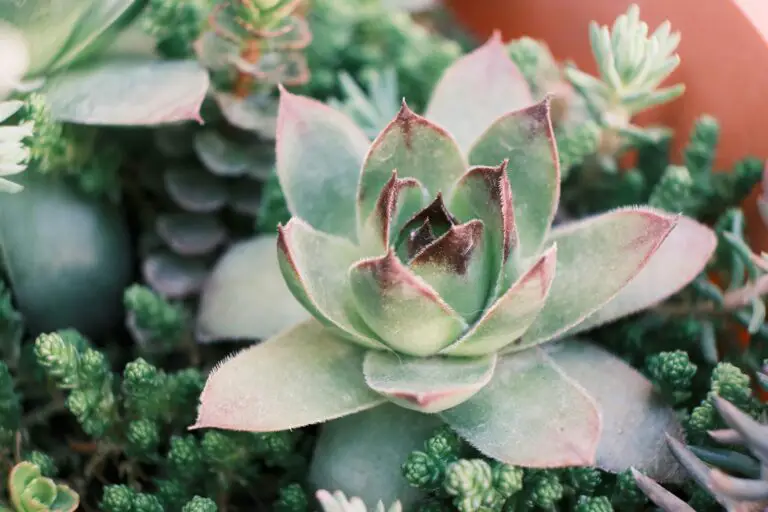Introduction to Sedum Planting
Welcome to the spellbinding world of sedums, the robust succulents that beckon gardeners with their easy-go-lucky character and spectacular foliage. If you’re plotting a garden revamp or dreaming up a rockery haven, then pegging the right time to plant these succulent perennials should be at the top of your horticultural to-do list. Why, you might ask? Because getting the timing right is critical to ensure your sedums thrive.

Imagine you’re packing for a vacation. You wouldn’t sling a puffer jacket into your suitcase if you’re heading for the tropics, right? Similarly, sedum has its seasons, and knowing them will make all the difference. Whether it’s the stonecrop’s dense mats beckoning butterflies or the taller, autumn-hued varieties adding a warm glow to your beds, timing your planting can lead to a lush, vibrant display that’s the talk of the neighborhood.
Not all sedum enthusiasts are versed in the optimal planting epochs. Some overlook the importance of hardiness zones, which are like climate ID tags for plants, indicating where they’ll flourish. Sedum, for instance, takes a bow in the spotlight across most zones, but dipping your toes into this knowledge can sharpen your sedum mastery.
Why should timing get such emphasis? Because soil warmth and texture, coupled with shifts in diurnal rhythms, are cues sedum plants listen to, orchestrating their growth cycle accordingly. Fail to heed these natural signals, and you may just miss that golden window of succulent success. To delve deeper into the art of sedum care, explore our informative guide on nurturing these perennials so you can cultivate with confidence!
Planting Sedum: The Seasonal Dance
As the seasons pirouette from the crisp whispers of autumn to the gentle thaw of spring, that’s sedum’s cue to embrace new beginnings. Early spring offers a sweet spot as the earth awakens, tender and teeming with promise. It’s when the frosts subside yet the sweltering heat hasn’t set in. If you time it just right, planting during this period can set your sedums on a path to prosperity, basking in the gentle sun and rooting with gusto.
Their resilience is legendary. Sedums, once established, are adept at braving elements that would send less hardy species into horticultural retreat. But it’s that initial tender care, the attention to the whispers of the seasons, that cements their splendor in your garden.
So here’s to the noble sedum, a succulent perennial that continues to capture the hearts of gardeners near and far. Immerse yourself in their world, respect their planting times, and you’ll be rewarded with a resplendent garden ally for years to come.
Understanding Sedum Varieties
Let’s embark on an exploration of the divergent paths in the sedum world. Sedums, a.k.a. ‘stonecrops’, are not your garden-variety succulents; they’re a vibrant tapestry with species ranging from ground-hugging beauties to lofty, upright stunners. And guess what? Their planting timeline is as varied as their forms! So, if you’re holding a trowel and unsure when to take the plunge, fear not; you’re about to become a savvy sedum sower.

Picture the low-growing ‘Sedum spurium’, flaunting its rosy hues as it cascades over rockeries or borders like a verdant waterfall. Meanwhile, the ‘Sedum telephium’, with its upright posture, waits patiently for late summer to roll out its carpet of star-shaped blossoms. These varied growth habits mean some sedums bask in the spring sun while others prefer the whisper of autumn to take root.
Take ‘Autumn Joy’, a classic variety that’s as patient as a sunbather waiting for the perfect ray. This sedum bides its time until late summer or early fall to show off its stuff. On the flip side, ‘Dragon’s Blood’ hits the ground running in spring, faster than you can say “garden envy.”
Understanding this patchwork of preferences is crucial. Knowing whether your sedum is a sun worshipper or a shade seeker will guide your planting decisions faster than you can click here for our comprehensive care guide. Key takeaway? Timing is everything, and sedums are sticklers for their schedules!
The Perfect Planting Window
Are you eyeing that spot in your garden for sedum but unsure when to break ground? Timing is indeed everything when it comes to planting these resilient succulents. Sedum, also known as stonecrop, thrives when the stars align with the right climate zone and the Goldilocks period of seasonal weather—neither too hot nor too cold.

Think of sedum as the plant world’s easy-going friend, the one who doesn’t ask for much but a sunny spot to soak up some warmth. Yet, even easy-going friends have their preferred timings, and for sedum, it’s the cool embrace of spring or the gentle descent into autumn. These are the times when the soil is just warm enough to stimulate root growth but cool enough to prevent heat stress on your new succulent friend.
Imagine tucking your sedum into a soil bed when the morning sun casts a low, warm glow, ensuring it settles comfortably before the blaze of summer arrives. Or picture an autumnal afternoon, the air crisp and the falling leaves creating a picturesque backdrop for planting your future ground huggers.
For those living in the cooler Northern climes, spring might be your sedum’s favorite start. It gives the plant a full season to establish itself before winter’s chill. As for gardeners in milder southerly zones, autumn could be ideal, providing relief from the scorching summer sun while still granting enough warmth for rooting.
If you’re still pondering the particulars of sedum care, why not leaf through our guide on nurturing these versatile plants? With insight into everything from watering needs to ideal companions, it’s the go-to resource for ensuring your sedum settles in successfully.
So, whether you’re planting the vibrant Sedum spectabile or the ever-popular Sedum album, mark your calendars. The perfect planting window for succulent success is not to be missed!
Soil Prep and Site Selection for Sedum
When you’re ready to bolster your garden with the resilient beauty of sedum, remember that the secret to succulent success firmly lies in the foundation — soil prep and site selection. But how can you transform your patch of earth into a sedum sanctuary? It’s simpler than you think, and we’re here to guide you through the process with some real-life wisdom.
Imagine this: You find the perfect sun-drenched nook in your backyard, an area that gets that golden glow for at least six hours a day. Sedum, with its succulent leaves and starry flowers, is basically a sun worshipper. It’s like the tan enthusiast of the plant world, soaking up those rays to flaunt its vibrant colors. But even sun lovers need the right soil to lounge in, and that’s where the prep comes into play.
Take a leaf out of the book of a seasoned gardener we met at a local plant swap. She compared preparing the soil for sedum to whipping up a fluffy, well-draining cake mix — one that won’t hold onto water like a soggy sponge. Instead, aim to mimic the rocky, well-aerated soils of sedum’s natural rugged habitats. You’re going for light, airy, and as unfussy as the plant itself. Toss in a blend of coarse sand, perlite, and compost, and you’ve got the gourmet soil mix that’ll make your sedum sing (not literally, but you get the picture).
It’s now time to select a site where your sedum can bask in all its glory. Think about the phrase “location, location, location” — it’s touted in real estate and holds true in the gardening world too. Choosing a spot with the best exposure ensures your sedum isn’t left in the shadows, quite literally. Ideally, you want it facing south or west to catch those delightful afternoon rays. Oh, and be sure to give your plants enough space to grow. Like a person in a cramped airplane seat, sedum appreciates a little elbow room.
And of course, don’t just take our word for it. Check out this helpful video that digs deeper into the world of sedum soil preparation and will show you just how to give your plants the perfect home:
Now that you’re armed with the know-how on soil prep and site selection, it’s time to get your hands dirty. Remember, sedum doesn’t ask for much — just a sunny spot to sprawl and a soil that drains like a dream. With this setup, your garden will soon be teeming with the lush, low-maintenance splendor of sedum.
Step-by-Step Planting Guide
Alright, green thumbs and succulent aficionados, let’s dig into the nitty-gritty of planting sedum—the right way. Whether you’ve got ‘Stonecrop’ dreams or are all about that ‘Sedum Spectabile’, getting your sedum into the soil at the perfect moment is your ticket to a flourishing garden display.

Imagine this: It’s a soft spring morning, you can feel the crisp air filled with new beginnings, and it’s time to get planting. Sedum, with its drought-tolerant superpowers, prefers to make its big move into the garden when the risk of frost is as dead as last year’s annuals. Picture planting it as an official welcome to the gentler days of spring!
But timing isn’t everything—location matters too. Sedum thrives in that sweet spot of your garden that gets enough sunshine to rival the beaches of Malibu. Once you’ve hunted down the perfect sun-soaked plot, it’s prep time, which is as straightforward as a solar-powered calculator. We’re talking well-draining soil that’s about as light and airy as your favorite chocolate mousse. If your soil’s more like heavy clay, consider raised beds or containers to keep your sedum smiling.
Here’s a nifty guide that can help you figure out which sedum vibes with your garden groove. Now, back to our planting mission. Once your sedum has found its forever home, water it as though it’s just run a marathon in the desert. But only at first—after the initial watering, sedum prefers a tough-love approach, just enough water to say, “I care,” but not so much that it feels smothered.
Keep in mind; this isn’t a one-way street. Your sedum’s going to give back with some low-maintenance magic. No need to be a helicopter gardener here—sedum is about as independent as a teen with their first car. Follow the TLC you’ve started it off with, and before you can say “photosynthesis,” you’ll witness a sedum spectacle that’s sure to be the talk of the neighborhood.
Care for Newly Planted Sedum
Imagine this: you’ve just planted your sedum, and it’s like you’ve welcomed a new member to your garden family. Right now, it’s time to roll up your sleeves and give your green buddy the spa treatment it deserves during these formative days. Let’s dig into the secrets of pampering your sedum to flourishing success.

Water Wisely – Your sedum’s first sips of water are crucial. It’s like teaching a baby to drink from a cup – be gentle, be patient. After planting, give it a good drink, but remember, this plant is not a thirsty camel. Its succulent leaves store water, so let the soil dry between waterings. Overwatering? That’s the fast lane to root rot town, and nobody wants to go there.
Feeding Fundamentals – Next up, food! Sedum doesn’t need a banquet. A sprinkle of balanced, slow-release fertilizer during the growing season is like a multivitamin for your plant. Too much, though, and you’ll tip the scales, leading to lush but weak growth that can’t stand up to Mother Nature’s challenges.
Let’s talk nurturing. You wouldn’t send a toddler to run a marathon, right? So, give your sedum time to strengthen its roots and adapt to its new home. Keep an eye out for pests and diseases; they love to crash the party uninvited. Be ready to show them the door with gentle, organic pest control methods—no harsh chemicals needed.
By following these pointers, you’re setting the stage for a sedum that’s robust, resilient, and ready to show off its succulent splendor. So go on, be the garden guru your sedum believes you to be!
Propagating Sedum: Expand Your Garden
Have you ever looked at your sedum collection and thought, ‘Wow, I wish I had more of these resilient beauties’? Well, the secret to a luxuriant, ever-expanding sedum sanctuary lies in the art of propagation. It’s like making a photocopy of your favorite plant—except you’re using stems or leaves instead of paper! Let’s dive into the enchanting world of sedum propagation and discover the best times to harness this plant’s natural cloning abilities for a garden that grows alongside your green thumb aspirations.
Timing Is Everything
Imagine you’re a sedum whisperer, and your succulent friends are eager to multiply with your guiding hand. The best time to start your propagation adventure is during the warmer months, when the plants are actively growing. This typically falls between late spring and early summer. Think of it as sedum’s own version of ‘baby season’—the conditions are just right for the little offshoots to take root and thrive.
Why is timing so critical? It’s all about maximizing success. Sedum, known for its hardy disposition, still favors the gentle warmth of sunny days and the longer daylight hours to establish itself. Propagating during this period is like giving your sedum cuttings VIP access to the best growth conditions possible. On the flip side, attempting to propagate in the chill of winter might leave you with more sad succulents than sprouting successes.
Hands-On Propagation How-To
Picture this: a single leaf or stem from your existing sedum plant has the potential to become a whole new specimen. All it takes is a simple snip. Using a clean, sharp pair of scissors or gardening shears, take a cutting of about two to five inches in length, ensuring it has a few leaves. But remember, be gentle as if you were handling a newborn chick.
After the snip, pause for a moment. Let the cutting callous over for a day or two—think of it as developing a tiny plant scab. This helps prevent rot and gives your sedum the best shot at setting root. Once your cutting has toughened up, nestle it into well-draining soil, and give it a sprinkle of water. Then, the waiting game begins. Keep the soil moist but not waterlogged, and soon enough, you’ll notice tiny roots reaching out into the soil, followed by fresh, new growth.
Real-life example: Jane, a seasoned gardener, swears by this method. Each year, as the spring sun begins to warm her garden beds, she takes cuttings from her showstopper ‘Autumn Joy’. Within weeks, she has new sedum plants eager to bring joy come autumn, just as their parent did. This simple propagation technique has transformed her humble yard into a verdant oasis filled with various sedum cultivars—all stemming from a few initial plants.
Now, to really get your green thumbs twitching, here’s a video that’ll guide you step by step through the process of propagating sedum, delivered by a fellow enthusiast who’s turned their sedum hobby into a flourishing garden feature:
Embracing sedum propagation isn’t just about expanding your garden; it’s about engaging with your plants on a deeper level, understanding their life cycle, and fostering a symbiotic relationship with these succulent marvels. Plus, it’s undeniably rewarding! With just a little know-how and the right timing, you can embark on a propagation journey that leads to a fuller, greener, and more vibrant garden space. So, grab those shears, channel your inner sedum whisperer, and let’s propagate!
Preventing Common Issues with Timely Planting
Embarking on your sedum planting journey? Picture this: a vibrant patch of succulents, each leaf more luscious than the last, thriving in your very own garden oasis. But hold up—before you dive into your horticultural adventure, let’s chat about the trickiest part: timing. Setting your sedum up for success means planting at just the right moment. After all, timing isn’t just a dance move; it’s the secret rhythm of your garden’s life!

Imagine a scenario where your sedum is planted too early or too late in the season. Poor little guys might face a gambit of garden gremlins: root rot from soggy soils, an all-you-can-eat buffet for pests, or a half-hearted establishment leading to a less-than-thriving existence. Think less ‘lush and plush’ and more ‘dull and sull’—not exactly what we’re aiming for, right?
Here’s the good news: with a tad of planning and a sprinkle of wisdom, you can sidestep these common conundrums. Planting sedum at the prime time—when the soil has said ‘goodbye’ to winter’s chill but ‘hello’ to spring’s warmth—is like giving your plants an all-access pass to the ‘Grow Big and Strong’ club. It’s all about balancing that sweet spot between too wet and too dry. Let your sedum sink its roots into that perfectly prepped earth, and you’ll be on the fast track to a showcase of succulent splendor.
So, to wrap it up (without wrapping it up), remember that the perfect planting time is your ticket to avoiding the troublesome trifecta of rot, pests, and poor establishment. Keep your ears perked for nature’s cues and your sedum will thank you—with a burst of growth, the resilience of a ninja, and a beauty that’ll make your neighbors green with envy.
Frequently Asked Questions
Got a green thumb itching to grow some sedum? Whether you’re a novice sprouting your first succulent or a garden guru, there are always questions popping up like seedlings in spring. Let’s dive into the gritty details of sedum planting!
Can I Plant Sedum in Containers?
Absolutely! Sedums are quite the laid-back loungers when it comes to container living. Imagine a shallow terracotta bowl brimming with sedum’s fleshy foliage—the perfect tabletop oasis! Just ensure there’s a drainage hole to avoid soggy soil, as these succulents crave well-drained conditions, much like a camel prefers dry deserts over damp deltas.
Who are Sedum’s Best Plant Pals?
Think of sedum as the social butterfly of the plant world, mingling with a variety of garden companions. Pair ’em up next to lavender for a stunning aesthetic and insect-repelling duo, or let them cozy up with ornamental grasses that whisper sweet nothings as the breeze dances through. Sedum plays well with others, especially those that equally enjoy basking in the sun and don’t mind missing a watering or two.
Is Winter a Worry for Sedum?
Cue “Survivor” by Destiny’s Child because sedum plants are the ultimate survivors when Jack Frost comes knocking. Most sedum species can weather winter like a polar bear in a snowstorm. While some may shed their leaves, opting for a seasonal snooze, others stand tall and maintain their cool composure. Just ease up on the watering and provide some extra mulch love to keep their roots cozy during the chillier chapters.
Want to see how it’s done? Check out this green-thumbed guide on getting your sedum to soar!



